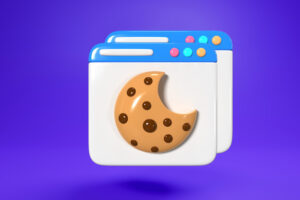A successful marketing campaign can raise your sales, but it may actually improve awareness and make your brand memorable for the consumers. This way, your brand is put in the center of attention, and it gains a reputation that spreads.
But as much as you want your brand to become a blockbuster, you may have run out of ideas. As a result, there is no better source of inspiration than a trip into the -not always so distant- past of history’s most successful campaigns. Let’s have a look at four examples:
Share a coke – Coca-Cola
Tip: Make your campaign personal
There is a lot to say about Coca-Cola. A brand standing in the top-10 of the most recognizable companies and directly linked to successful marketing campaigns. From the Hilltop to the famous polar bears and the “Taste The Feeling” campaign, we have a lot to learn.
But a campaign that stands out is “Share a Coca-Cola” because it introduced a more personal element to the advertising strategy.
In the spring of 2013, the Coca-Cola logo in the packaging gave its position to the 150 most popular names. At the same time, using the app anyone could create custom packaging displaying any name they preferred. The campaign was promoted on analog and digital channels and events. Its purpose was to cultivate the culture of sharing, companionship, and offering to our loved ones, inspiring optimism for the future.
Given the increase in product searches and sales, the campaign accomplished its purpose. The people that were looking to learn more about the campaign, were more likely to buy the refreshment at some point. Maybe this example can inspire you to personalize your own advertising campaign.
Like a girl – Always
https://www.youtube.com/watch?v=XjJQBjWYDTs
Tip: Create an inspiring marketing campaign
In 2014, Always launched a global advertising campaign aiming to empower young girls around the world and help them maintain and boost their self-confidence by overcoming stereotypes.
Into a 3-minutes video, men and women were asked to run, fight, and throw a shot “like girls”. It quickly became clear that the expression “like a girl” sounded like an insult, as the participants reacted with funny and weak moves imitating failure. When young girls, before adolescence, yet not infected by negative stereotypes, were asked to do the same, they ran and fought with all their might.
When did doing something “like a girl” become an insult? Something for which women should be ashamed? It could be a positive expression of all the great things that a girl can achieve.
The success of the campaign was immediate and obvious. Under different circumstances, no one would share a hygiene product commercial. However, everyone wants to share a message that encourages young women to claim their place in the world.
Ice bucket challenge – ALS Association
Tip: Become viral and let the public share the message
When we talk about viral, then “ice bucket challenge” is the definition. It is the challenge of throwing a bucket of ice water on someone’s head, either by themselves or by someone else. Its purpose was to raise awareness about the disease of amyotrophic sclerosis (ALS). The scene is taken in video and uploaded to social media. At the same time, the participant “tags” other people to accept the ice bucket challenge or donate to the ALS Association, to promote research to treat the disease.
The role of social media was crucial in spreading the challenge and the message. Mark Zuckerberg was one of the first to respond to the invitation by uploading a video in which he bathes in ice water, inviting Bill Gates to follow.
The campaign became quickly a global phenomenon and achieved its goal to dramatically increase donation revenue and cultivate awareness of a hitherto unknown disease.
There is a lot to learn from a campaign’s success. Unexpected content that arouses curiosity and emotion, encourages dissemination to the world, involves public figures, and has a clear call to action. The “ice bucket challenge” includes all of this.
Where is the beef – Wendy’s
Tip: When marketing is over, the slogan goes down in history
There are many advertising slogans etched in our memory. But, in the ‘80s, the “Where is the beef?” Wendy’s fast-food chain made the difference. The main idea was to expose its big fast-food chain competitors showing that they use more bread in their burgers, while Wendy’s use more beef. In the commercial, the actress Clara Peller visits a restaurant of a hypothetical competitor. Then, they serve her a burger with a big bread, and she exclaims the slogan that went down in history: “Where is the beef?”.
Over the years, the commercial spot took different forms, but the slogan remained the same. It entered pop culture as synonymous with the questions “Where is the main subject?”, “Where is the point?”.
The highlight was the 1984 U.S. presidential elections. During the Democratic nomination, candidate Walter Mondale used the slogan “Where is the beef” to sum up his arguments against political opponent Gary Hart’s programmatic statements, implying that his proposals were not substantial.






Join the Discussion